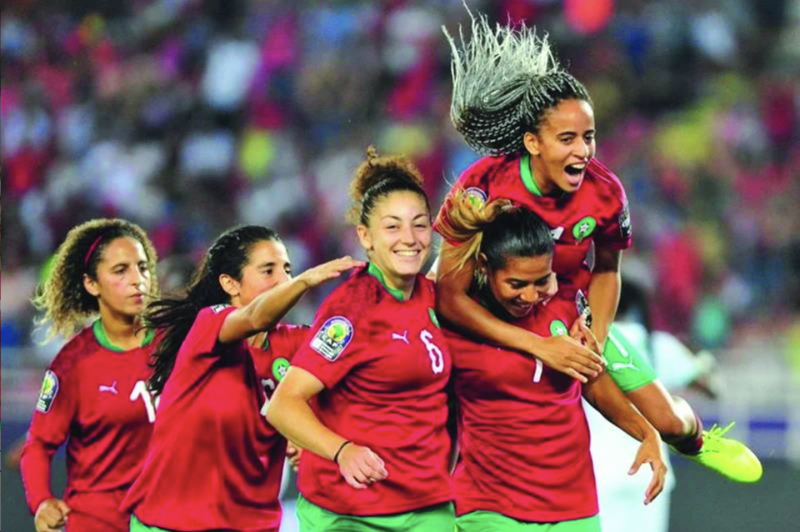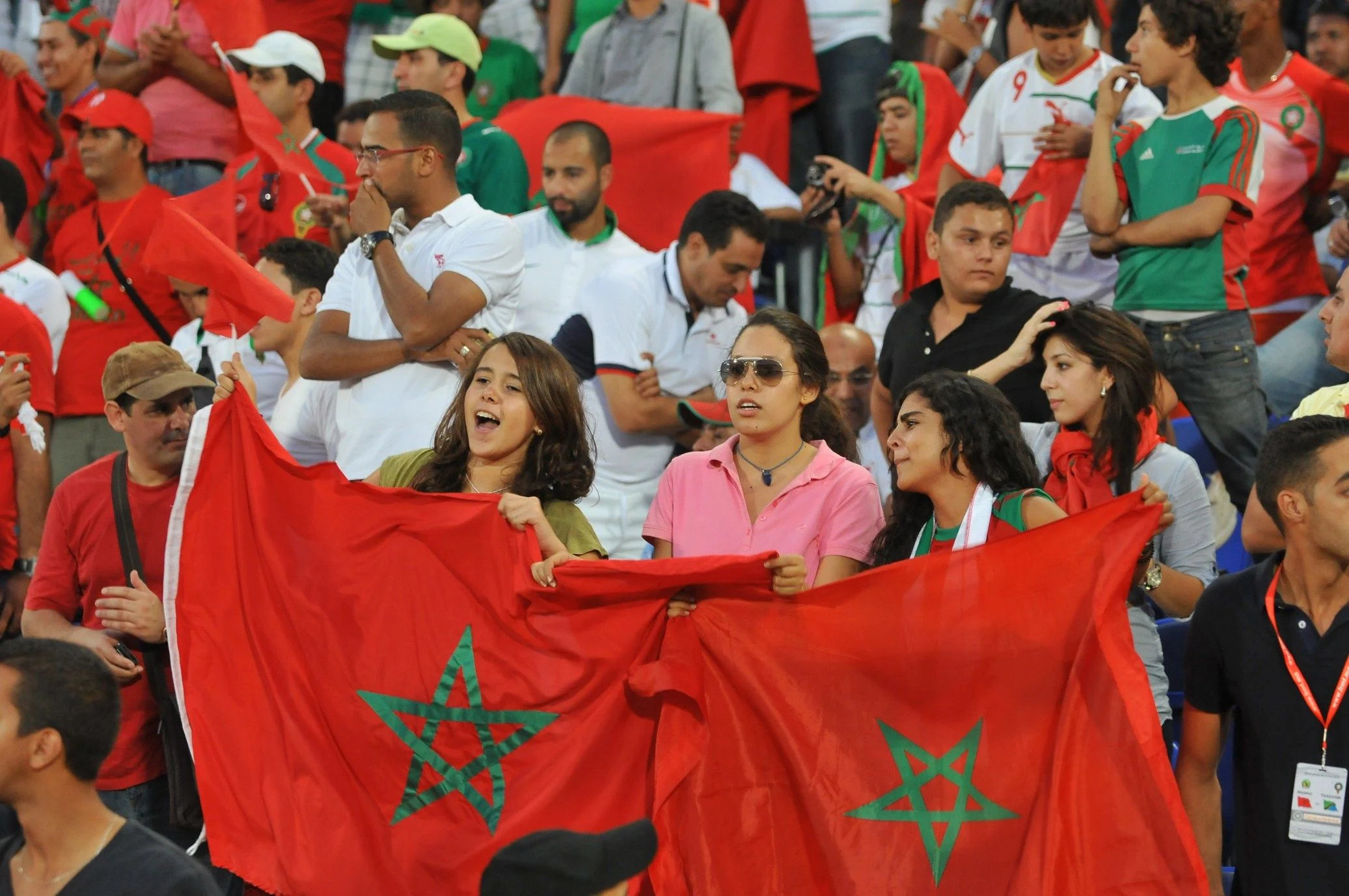
The success of the Atlas Lionesses has had a significant impact on mentalities in Morocco, contributing to a gradual change in perceptions on the role of women in sport. (Photo from L'Economiste)
We are sharing this article, originally published in L'Economiste in Morocco, as part of our collaboration with the Spark News Towards Equality Initiative for International Women’s Day.
“When I saw, at the end of a match between the teams AS FAR (Rabat-based football club) and Assa Zag (a province located in the South of Morocco) boys run up to the female players to ask for their autographs, I realized that women’s football had gained in popularity and that it is no longer marginalized,” recalls Leila El Yousfi, coordinator of Morocco’s sports-study program . In fact, a tangible social “revolution” has been taking place in the country in line with the emergence of the Atlas Lionesses, the Moroccan national female football team, which has succeeded in making a name for itself on the international scene. The team’s remarkable journey – in tournaments such as the Women’s Africa Cup of Nations in 2022 and the 2023 Women’s World Cup in Australia – has earned international respect for the players, and has inspired interest in women’s football among Moroccan supporters.
Their success is by no means down to chance. In recent years, the Kingdom of Morocco has actually made the bold decision to massively invest in women’s football. Its annual budget has increased tenfold, reaching over 650 million dirhams (around 65 million U.S. dollars). Development programs have been set up to encourage girls to get involved in the sport, and sports-study pathways have been opened, creating the foundation for women’s football to form a solid structure.
Although football in Morocco has been practiced by women since 2008 as an amateur sport, perhaps the true founding year of its professional iteration is 2014, with the appointment of Fouzi Lekjâa as president of the Royal Moroccan Football Federation (FRMF).
“When the federation took up the task of developing women’s football, the latter was categorized under the ‘diversified football’ commission, alongside futsal and beach soccer. I suggested to the president of the Federation that we set up a commission dedicated to women’s football, and he agreed,” recounts Nasser Larguet, the former technical director of the Moroccan national team and one of the architects of the women’s football reform. “It was decided that we organize women’s football in the same way as men’s. We therefore set up an Under-17 championship in 2016 and we launched in 2017, with the precious support of Leila El Yousfi, the first sports-study program for women’s football.”
The sports-study program for female football players started in the cities of Rabat and Saidia, and later expanded to regional football centers across the kingdom. According to Ghizlane Chebbak, midfielder at AS FAR and in the Moroccan national team, the establishment of such programs has really encouraged women to develop their talent. “We’ve also enabled women to access high-level coaching training alongside men,” says Nasser Larguet. Numerous female players have then become coaches, following in the footsteps of the former international Moroccan player Lamia Boumahdi who has been coaching the TP Mazembe team in the Democratic Republic of the Congo since March 2023 and has won with them the national championship.
Since August 2020, women’s professional football has gained further importance in the country. A “Plan for the Development of Women’s Football in Morocco 2020-2024” was crafted and put in action with the aim of encouraging more women to pick football as a career and thrive in it.
To do so, women’s football as a profession has been reorganized, and funds were allocated to help it grow. For instance, the Royal Moroccan Football Federation takes on club expenses such as providing jerseys, balls and transport vehicles. It also covers the salaries of the D1 and D2 players, who are respectively paid 3,500 and 2,500 dirhams per month (around 350 and 250 U.S. dollars). The target is to reach 90,000 female participants in the game and 10,000 female and male technicians this year.
According to sports-study coordinator Leila El Yousfi, the strategy is “paying off.”“The success of women’s football hinges on effective sports policy, on training and on financial aid. This encourages families to let their girls play. There are no more psychological barriers because all the conditions have been met to enable Moroccan girls to pursue a professional career in football.”
Football player Ghizlane Chebbak agrees. “The results that we’ve had have considerably changed mentalities in Morocco. Today, families are searching for clubs that their girls could play for and become part of the national team.”
 The remarkable trajectory of the women’s Eleven, in tournaments such as the Africa Cup of Nations in 2022 and the 2023 World Cup in Australia, has won them respect worldwide and has inspired interest in women’s soccer among Moroccan supporters. (Photo from L’Economiste)
The remarkable trajectory of the women’s Eleven, in tournaments such as the Africa Cup of Nations in 2022 and the 2023 World Cup in Australia, has won them respect worldwide and has inspired interest in women’s soccer among Moroccan supporters. (Photo from L’Economiste)
The success of the Atlas Lionesses has had a significant impact on society’s perceptions of the role of women in sport, too. “The news media have helped the national team gain visibility. They give them as much weight as the Atlas Lions, the men’s team which achieved the feat of reaching the semi-finals of the World Cup 2022 in Qatar. It’s awesome,” chimes in Kenza, a big fan of the Beautiful Game. This has brought gender stereotypes into question, and young girls have been inspired to pursue their sporting dreams without fearing social prejudice.
“I dream of playing for Morocco, the team is very good”, says Hanna, a 10-year-old French-Moroccan girl who plays for a club in Bourg-en-Bresse (France).
Today, the women’s national team is a model for many players both in Morocco and abroad. With each new performance, Atlas Lionesses are proof that talent, determination and hard work can transcend barriers to gender equality.